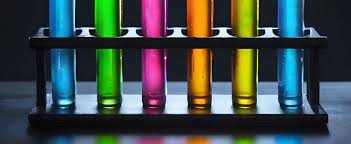If you are looking for high-quality products, please feel free to contact us and send an inquiry, email: brad@ihpa.net
Frequently used ingredients in plastic shade matching include dispersants, lubricating substances, diffusion oils, combining representatives, compatibilizers, and so on. Commonly encountered resin ingredients consist of flame resistants, toughening representatives, brighteners, UV preventions, anti-oxidants, anti-bacterial representatives, antistatic representatives, etc. One of the most usual ones are fillers for price decrease or physical alteration, such as light calcium carbonate, heavy calcium carbonate, talc, mica, kaolin, silica, titanium dioxide, red mud, fly ash, diatomaceous planet, wollastonite, glass beads, barium sulfate, calcium sulfate, etc, along with organic fillers, such as wood flour, corn starch, and other agricultural and forestry byproducts. Filling up and enhancing products consist of glass fiber, carbon fiber, asbestos fiber, synthetic organic fiber, and so on
Intend the above additives are added to the item’s basic materials. In that case, they have to be contributed to the resin raw materials in the exact same percentage in the color-matching proofing so as not to generate a shade distinction in the succeeding manufacturing.
(Additives for Plastic Color Matching)
Dispersant
Dispersant types include fatty acid polyurea, hydroxy stearate, polyurethane, oligomeric soap, and so on
Today, the commonly utilized dispersant in the market is lubricating substance. Lubes have excellent dispersibility and can likewise improve the fluidness and demolding performance of plastics throughout molding.
Lubes are separated into internal lubricants and external lubricating substances. Inner lubricating substances have a specific compatibility with resins, which can reduce the communication between material molecular chains, decrease melt viscosity, and improve fluidity. Outside lubricants have poor compatibility with materials. They adhere to the surface of molten materials to develop a lubricating molecular layer, consequently minimizing the rubbing between resins and handling equipment.
Lubricants
According to the chemical framework, they are mainly divided right into hydrocarbons, metal soaps, lubes that play a demolding function, fatty acids, fat amides, and esters.
Such as vinyl bis ceramide (EBS)
EBS (Ethylene Bis Stearamide), additionally known as plastic bis stearamide, is a highly effective inner and exterior lube and dispersant widely utilized in the plastic processing industry. It is suitable for all thermoplastic and thermosetting plastics, consisting of however not restricted to polyethylene (PE), polypropylene (PP), polystyrene (PS), polycarbonate (PC), polyamide (PA), polyester (PET/PBT), polyurethane (PU), phenolic material, epoxy material, and so on. Here are a few of the primary roles of EBS in these plastics:
(EBS Ethylene Bis Stearamide Emulsion)
Diffusion
As a dispersant, EBS can help evenly disperse fillers and pigments during plastic handling, avoid load, and improve the dispersion and stability of pigments and fillers. This aids boost the color uniformity and mechanical residential properties of the end product. As an example, in masterbatch production, EBS can make sure that pigment fragments are uniformly dispersed in the carrier resin to make sure that regular shade is displayed in subsequent plastic items.
Internal lubrication
In the plastic thaw, EBS can decrease the rubbing between particles and the shear stress of the plastic thaw, consequently lowering the melt viscosity and making the melt flow smoother. This helps in reducing stress throughout extrusion or shot molding, reduces handling temperatures, and shortens molding cycles, while likewise decreasing energy intake, enhancing processing performance, and enhancing the life span of devices.
Exterior lubrication
EBS creates a thin lubricating movie on the plastic surface area, which can decrease the rubbing between the plastic melt and the metal mold and mildew, boost demolding performance, and prevent sticking of plastic products throughout molding. This not only helps to boost the surface area finish of the item and lower problems yet also streamlines the post-processing procedure and boosts production performance.
Various other functions
In addition to the above primary functions, EBS can additionally be utilized as an antistatic agent to enhance the antistatic buildings of plastic products and reduce troubles such as dust adsorption brought on by fixed electricity. In some applications, EBS can also boost the weather resistance and chemical resistance of plastic items.
In the injection molding procedure, when completely dry coloring is used, surface therapy representatives such as white mineral oil and diffusion oil are normally added throughout mixing to play the function of adsorption, lubrication, diffusion, and demolding. When readjusting the color, it must also be added to the raw products in proportion. First, include the surface therapy representative and shake well, after that add the color powder and shake well.
When choosing, the temperature level resistance of the dispersant must be determined according to the molding temperature of the plastic resources. From a cost viewpoint, in principle, if a tool and low-temperature dispersant can be made use of, a high-temperature resistant one must not be picked. High-temperature dispersants require to be resistant to more than 250 ° C.
Supplier of EBS Ethylene Bis Stearamide Emulsion
TRUNNANO is a supplier of 3D Printing Materials with over 12 years experience in nano-building energy conservation and nanotechnology development. It accepts payment via Credit Card, T/T, West Union and Paypal. Trunnano will ship the goods to customers overseas through FedEx, DHL, by air, or by sea. If you want to know more about EBS Emulsion, please feel free to contact us and send an inquiry.
Inquiry us

